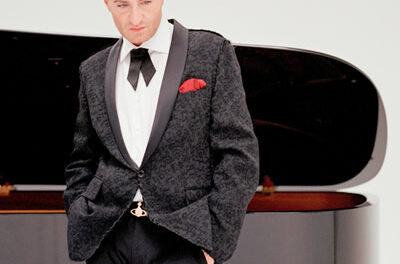Simon Keenlyside / Malcolm Martineau: Songs by Schubert, Wolf, Fauré and Ravel.Wigmore Hall Live WHLive 0031; one CD, $17.98.
Simon Keenlyside is certainly at the top of his game at the moment. Having performed internationally now for over two decades, his confidence, intelligence and sincere musicality make him sought after for high profile operatic assignments and for recitals in notable venues. Thousands saw him in late March in the title role of Thomas’ “Hamlet” by way of the Metropolitan Opera’s HD movie theater transmission, a performance that confirmed his riveting dramatic concentration and subtle emotional insights.
That same interpretive talent comes through even when it’s only heard and not seen. This live recording from an October 26, 2008, recital in London’s Wigmore Hall shows off Keenlyside’s range and sensibilities in a nigh-perfect presentation.
The six Schubert songs that open the program form a mini-catalog of this artist’s abilities. His diction is clean and true, without undue exaggeration; his vocal production warm and open, never strained. He finds subtle variations in familiar songs, such as “An Silvia” and “Ständchen,” while saving his deepest focus for less familiar items. He makes a mini-drama out of “Verklärung,” agitatedly intense when calling upon nature to cease life’s pain, ecstatically hushed when addressing the spirits of death. Similarly, Keenlyside gives “Himmelsfunken” a radiant calm as he describes the call to heaven. Each song has its own dramatic world precisely differentiated from the others.
Six Wolf songs provide a wider range of character and mood, which Keenlyside eagerly takes on, applying specific colors and weight to each odd shift and pause. He finds great beauty in “An die Geliebte,” with its passionate tribute to a beloved, and tortured obsession in “Lied eines Verliebten,” with its crazed lover’s longings. Pianist Malcolm Martineauprovides equally intense or wafting accompaniment as required.
Although Keenlyside lightens his voice and style for the two French groups, it is still a more robust sound than usually associated with such material. However, he uses his French diction and huge dynamic range to characterize each song with admirable specificity. In the eight Fauré works, Keenlyside supplies ardent youth in “Green,” palpitating breathlessness in “Notre amour,” and bitter anger in “Fleur jetée,” nicely underpinned by Martineau’s cheeky, spiky keyboard contributions. In the five pieces that make up Ravel’s “Histoires naturelles,” Keenlyside shifts into impressionist mode, singing of peacock, cricket, swan, kingfisher and guinea fowl with appropriate languidness, mirrored in Martineau’s dreamy support. (There’s a Poulenc encore, the slight “Hôtel.”)
The recorded sound is clear, with the performers at a slight remove to give the feeling of the hall, allowing some reverberant space around them. The audience is extremely quiet, its enthusiastic applause included at the end of each set.
Some may have other favorite interpreters for individual songs or composers, but taken as complete recital, this recording is hard to beat. It should please aficionados as well as those new to these works.











